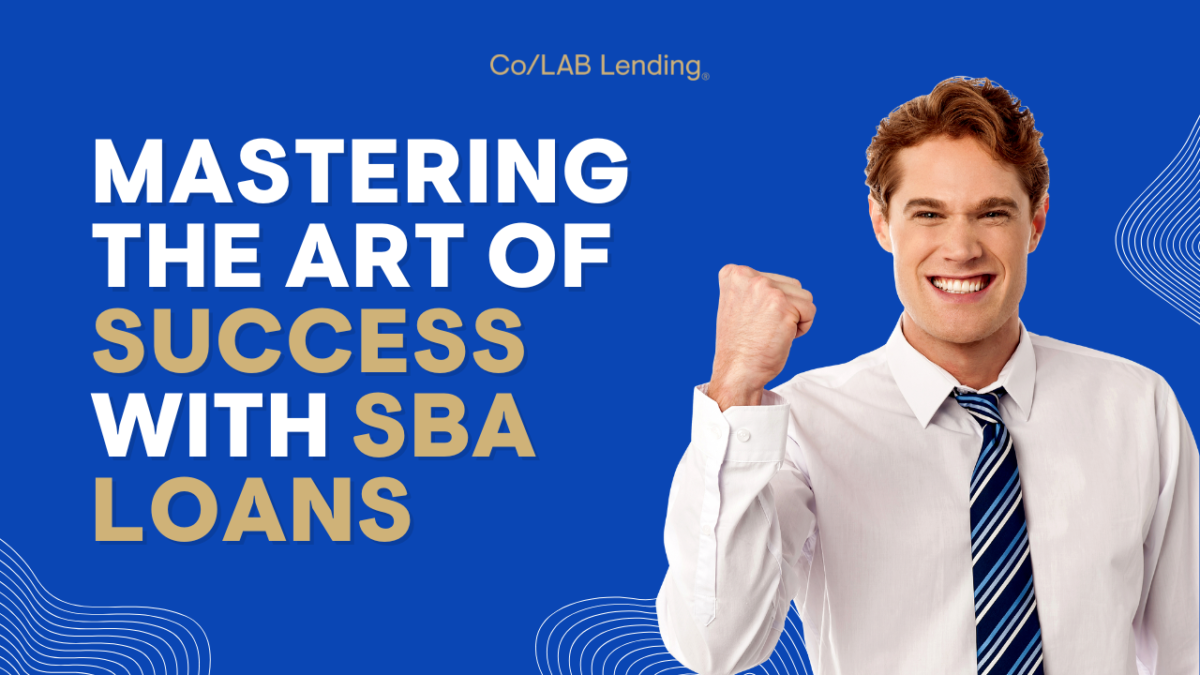SBA Loans: Your Comprehensive Guide to Business Success
Unlocking Success with SBA Loans: A Comprehensive Guide
The journey of entrepreneurship is filled with challenges, and one of the most daunting can be securing financing. For many small businesses, the Small Business Administration (SBA) loans serve as a beacon of hope. Let’s dive deep into understanding these loans and how they can pave the way for your business success.
Understanding SBA Loans: What They Are and How They Work
Defining the SBA Loan: A Beacon for Entrepreneurs
The Small Business Administration (SBA) is a U.S. government agency established to support and empower small businesses. Headquartered in Washington, D.C., the SBA operates under the federal government and is governed by the Administrator and Deputy Administrator, both of whom are appointed by the President.
An SBA loan isn’t directly provided by the SBA itself. Instead, the SBA acts as a guarantor, assuring lenders that a portion of the loan will be repaid even if the borrower defaults. This guarantee makes banks more willing to lend to small businesses. Over the years, the SBA has been a cornerstone for many entrepreneurs. Since its inception, it has been instrumental in financing more than 28 million small businesses. This commitment to fostering growth was further highlighted in 2021 when the SBA approved a staggering $100 billion in loans to small businesses. These figures not only underscore the SBA’s pivotal role but also emphasize its unwavering support for the small business community.
The Crucial Role of the Small Business Administration
The SBA, a U.S. government agency, empowers and supports small businesses by providing loans through partnering banks. Their primary goal is to ensure that small businesses have access to the financing they need to thrive and grow.
Exploring the Various SBA Loan Programs
Differences Between SBA 504 and SBA 7A Loan Programs
The SBA offers a variety of loan programs tailored to the unique needs of small businesses, with the 504 and 7A programs being among the most sought-after.
The SBA 7A program stands out as the most popular type of SBA loan. Its versatility is evident in its usage statistics: in 2021, the SBA approved a whopping $75 billion in 7(a) loans. One of the standout features of the 7A program is its flexibility. Not only can it be used for general-purpose financing, such as buying a business or real estate, but it also offers the option to refinance existing debt. This refinancing capability can be a game-changer for businesses, freeing up cash flow for other essential purposes.
On the other hand, the SBA 504 program is specifically designed for real estate and equipment purchases. A unique advantage of the 504 program is its ability to facilitate the acquisition of both equipment and real estate simultaneously. This dual-purpose approach can lead to significant savings for borrowers, especially when it comes to closing costs.
If you are a business owner and unsure of which program is best for you speaking to an experienced commercial loan broker is a good idea.
An Introduction to the SBA Microloan Program
For businesses that require smaller-scale funding, the SBA’s microloan program can be a perfect fit. This program provides loans up to $50,000, assisting startups and smaller enterprises in their initial growth phases.
A standout feature of microloans is their very flexible terms and conditions. Most notably, they do not require collateral. Collateral refers to assets, like property or equipment, that a borrower offers as a way to secure a loan. If the borrower fails to repay the loan, the lender can take the collateral as a form of repayment.
The advantage of not having to use collateral when applying for business financing is significant. For startups and small businesses, which might not have substantial assets, this means they can access funds without risking their limited resources. Furthermore, it simplifies the loan application process and provides peace of mind to business owners, knowing they won’t lose crucial assets if they face difficulties with repayments.
Top Benefits of Choosing SBA Loans for Your Business
The Appeal of Competitive Interest Rates
When it comes to financing, interest rates play a pivotal role in determining the overall cost of a loan. SBA loans stand out in this regard, offering competitive rates that often outshine those of conventional loans. But what makes these rates so attractive?
First, the interest rates on SBA loans are typically lower than those on conventional loans. However, they aren’t one-size-fits-all. These rates can fluctuate based on factors such as the loan type, the loan amount, and, crucially, the borrower’s credit score. Let’s break it down with an example: if the prevailing prime rate is at 8.5%, an SBA fixed-rate loan might come with an interest rate that’s the prime rate plus anywhere from 2.75% to 3.5%. On the flip side, SBA variable-rate loans might hover around the prime rate plus 0.5% to 2.5%.
But here’s the kicker: SBA loan interest rates have a cap. This means there’s a ceiling to how high these rates can go, ensuring borrowers aren’t blindsided by exorbitant rates. This cap is a protective measure, shielding businesses from the pitfalls of high-interest loans.
Why are these rates generally lower, you ask? The answer lies in the SBA’s guarantee. By vouching for a portion of the loan, the SBA reduces the risk for lenders, leading to more favorable rates for borrowers.
Now, you might wonder, “How do these rates stack up against other business financing options?” While SBA loan rates often outpace conventional loan rates, they might be slightly higher than some alternative financing methods like peer-to-peer lending or merchant cash advances. However, the stability, flexibility, and protective measures of SBA loans often make them a preferred choice for many businesses.
Understanding the Flexibility in Down Payments
One of the standout features of SBA loans that often catches the attention of budding entrepreneurs is their flexible down payment requirements. Let’s be real; not every business owner has a hefty sum stashed away for a down payment. That’s where SBA loans come in, offering a breath of fresh air with their adaptable down payment terms.
For the 7(a) loans, the starting point is a down payment of just 10%. It’s a relatively low threshold, making it accessible for many. But here’s where it gets interesting: depending on factors like your credit score and overall financial strength, this requirement can stretch up to 30%. It’s tailored, ensuring that the terms align with the borrower’s financial profile.
On the other hand, the 504 loans also begin with a 10% down payment requirement. However, for those with certain financial nuances, this might go up to 20%, again influenced by the borrower’s credit score and financial robustness.
As mentioned above the SBA Microloan does not have a down payment requirement. It’s important to keep that in mind and understand all of your options when evaluating your businesses financial needs.
The Step-by-Step SBA Loan Application Process
Key Documentation and Requirements for Applicants
Applying for an SBA loan requires thorough documentation. Lenders typically ask for several years of tax returns, personal financial statements, business financial statements, and more. Additionally, the SBA often looks for evidence of a business operating for at least two to three years. However, exceptions can be made for those with significant experience in their industry.
Why Financial Stability is Essential for SBA Loan Approval
Financial stability is paramount when applying for any loan. The SBA and partnering banks will scrutinize both personal and business credit histories. A solid track record of financial responsibility can significantly smooth the application process.
Understanding the SBA Loan Approval Timeline
It’s essential to have a clear picture of the timeline you’re diving into. While the allure of financial support is enticing, understanding the process can help set realistic expectations and ensure you’re prepared every step of the way.
The application journey for an SBA loan is akin to a marathon, not a sprint. Typically, it can span anywhere from 30 to a whopping 90 days. The duration hinges on two main factors: the lender’s pace and the intricacies of your loan application.
Once you’ve submitted your application, the lender takes the reins, meticulously reviewing your financial data and business blueprint. This is their chance to gauge the viability of your venture and the risk associated with the loan. If your application shines and passes their scrutiny, it’s then forwarded to the big leagues – the SBA itself.
The SBA, with its commitment to fostering small businesses, typically doesn’t keep applicants hanging for long. Within a 30-day window, they’ll review the application and make their decision.
Conclusion: Making the Most of SBA Loans and Planning Your Next Steps
SBA loans offer a lifeline to businesses looking for affordable financing options. Whether you’re looking to purchase equipment, real estate, or need working capital, the SBA has a program tailored to your needs. As with any financial decision, it’s crucial to do your research, understand the terms, and consult with financial professionals.
If you are ready to apply or just want to speak to someone about financing for your business you can complete this short no obligation commercial loan pre approval form.
FAQs:
1. What is the primary role of the Small Business Administration in SBA loans?
The SBA acts as a guarantor for the loans, assuring lenders that a portion of the loan will be repaid even if the borrower defaults.
2. How do the SBA 504 and 7A programs differ?
The 504 program is tailored for real estate or equipment purchases, while the 7A program offers more general-purpose financing.
3. What is the maximum amount I can borrow with the SBA’s microloan program?
The microloan program offers loans up to $50,000.
4. Are there any benefits to SBA loans over traditional business loans?
Yes, SBA loans often come with competitive interest rates and flexible down payments.
5. How long has a business typically been operating to qualify for an SBA loan?
The SBA usually looks for a business operating history of at least two to three years. However, exceptions can be made based on industry experience.
Tap into a world of possibilities!
Categories
- Credit (4)
- FHA Loans (3)
- Finances (3)
- First Time Home Buyers (6)
- Grab Bag (7)
- Home Technology (1)
- Homebuying Tips (17)
- Inspiration (1)
- Insurance (3)
- Interest Rates (3)
- Loan Process (1)
- Mortgage Financing (14)
- Motivation (1)
- News (1)
- Press Release (8)
- Renovation (2)
- Self Employed (1)
- Tips & tricks (1)
- Uncategorized (134)
- USDA Loans (1)
- VA Loans (2)




